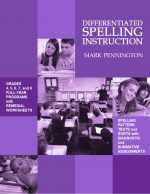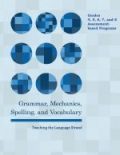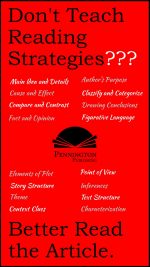Dyslexia Is Not Real?
The International Literacy Association (ILA) recently (2016) released a position paper on dyslexia. The paper is mildly critical of those who tend to attribute reading difficulties to dyslexia. The paper, like many organizational position statements, pitches a few softballs at the International Dyslexia Association (IDA).
The IDA fired back with its own critique of the ILA’s position paper. In its response, the IDA criticizes what it perceives as misinterpretations of the research studies regarding dyslexia.The game quickly changed from softball to hardball.
The ILA had its ducks in a row (Was the organization anticipating a response from the IDA?) and tore into the ILA’s critique with an addendum to its original position paper: “Dyslexia: Response to the International Dyslexia Association.” In the addendum the ILA questions whether dyslexia is, indeed, a diagnosable condition, disputes the IDA’s advocacy of a one-size-fits-all solution to reading problems, i.e., systematic, explicit phonics instruction, and advocates abandoning the term, dyslexia, altogether. Quite a strong position paper from such a venerable reading institution!
Problems with the term, dyslexia.
The International Dyslexia Association offers a variety of definitions regarding dyslexia (bolded terms mine):
“Dyslexia is a neurological condition caused by a different wiring of the brain. There is no cure for dyslexia and individuals with this condition must learn coping strategies” (https://dyslexiaida.org/dyslexia-at-a-glance/).
“Dyslexia is, above all, a condition that impedes reading acquisition” (https://dyslexiaida.org/ida-urges-ila-to-review-and-clarify-key-points-in-dyslexia-research-advisory/).
Following is another more detailed definition of dyslexia, adopted by the IDA Board of Directors, Nov. 12, 2002 (bolded terms mine):
Dyslexia is a specific learning disability that is neurobiological in origin. It is characterized by difficulties with accurate and/or fluent word recognition and by poor spelling and decoding abilities. These difficulties typically result from a deficit in the phonological component of language that is often unexpected in relation to other cognitive abilities and the provision of effective classroom instruction. Secondary consequences may include problems in reading comprehension and reduced reading experience that can impede growth of vocabulary and background knowledge (https://dyslexiaida.org/definition-of-dyslexia/).
Notice the multiplicity of reading problems purportedly attributed to dyslexia.
For example,
In 1990, E. Denis Wilson, a medical doctor in Florida invented what he modestly called “Wilson’s Temperature Syndrome” –a new condition he claimed was widespread, and causing a huge array of symptoms: fatigue, headaches, irritability, fatigue, dry skin, asthma, allergies and more. Wilson claimed his condition could be diagnosed by measuring body temperature. A lower than normal temperature confirms the diagnosis. According to Wilson, it was the slight reduction in body temperature that apparently causes the body’s metabolic pathways to function-sub-optimally, causing the vague symptoms reported. Your medical doctor doesn’t diagnose Wilson’s Temperature Syndrome because it’s a fake disease (https://sciencebasedmedicine.org/naturopathy-vs-science-fake-diseases).
Such tests lend credence to the notion that the condition is more prevalent than many would believe. The “you are not in this alone” assurance tends to be a key marketing strategy. The International Dyslexia Association claims that “Dyslexia affects 1 in 5 individuals, many of whom remain undiagnosed and receive little or no intervention services” (https://dyslexiaida.org/dyslexia-test).
Wilson recommended the use of thyroid hormone (T3) to treat his syndrome. Note that an invented condition always seems to have a snake-oil cure-all.
The International Dyslexia Association has systematic, explicit phonics instruction as its treatment and plenty of resources in its website’s bookstore. As a publisher, I provide science of reading-based resources built on word recognition and applying Scarborough’s Rope and the Simple View of Reading; however, I don’t purport to offer my programs as solutions to brain conditions.
But many ask why not simply agree to use the term, dyslexia, as a catch-all word for reading problems?
It would be tempting to do so; however, continuing to use this term, dyslexia, is counterproductive. The IDA’s classification of dyslexia as an incurable learning disability precludes using the term as a convenient synonym for reading problems. Although many struggling readers are certainly well-served with the explicit, systematic phonics approach advocated by those in the dyslexic camp, this instructional remedy and others should not be promoted as mere coping mechanisms. Reading specialists and reading intervention teachers know that targeted, assessment-based instruction can cure reading problems, not just provide simple band-aids.
To close, I agree with the conclusion of the International Literacy Association in its position paper addendum responding to the criticisms of the International Dyslexia Association:
“In other words, there is no empirical basis for the use of the term dyslexic to distinguish a group of children who are different from others experiencing difficulty acquiring literacy (“Dyslexia: Response to the International Dyslexia Association”).
Reading is a complex and multi-faceted process. Let’s abandon over-application of the dyslexia diagnosis and its purported treatments;
*****
FREE DOWNLOAD TO ASSESS THE QUALITY OF PENNINGTON PUBLISHING RESOURCES: The SCRIP (Summarize, Connect, Re-think, Interpret, and Predict) Comprehension Strategies includes class posters, five lessons to introduce the strategies, and the SCRIP Comprehension Bookmarks.
Get the SCRIP Comprehension Strategies FREE Resource:
![]()
*****
The Teaching Reading Strategies (Intervention Program) is designed for non-readers or below grade level readers ages eight–adult. This full-year, 55 minutes per day program provides both word recognition and language comprehension instructional resources (Google slides and print). Affordable, easy-to- teach, and science of reading-based, featuring the Sam and Friends Phonics Books–decodables designed for older students. The word recognition activities and decodables are also available as a half-year option in The Science of Reading Intervention Program.
PREVIEW TEACHING READING STRATEGIES and THE SCIENCE OF READING INTERVENTION PROGRAM RESOURCES HERE.
Literacy Centers, Reading, Spelling/Vocabulary, Study Skills

















